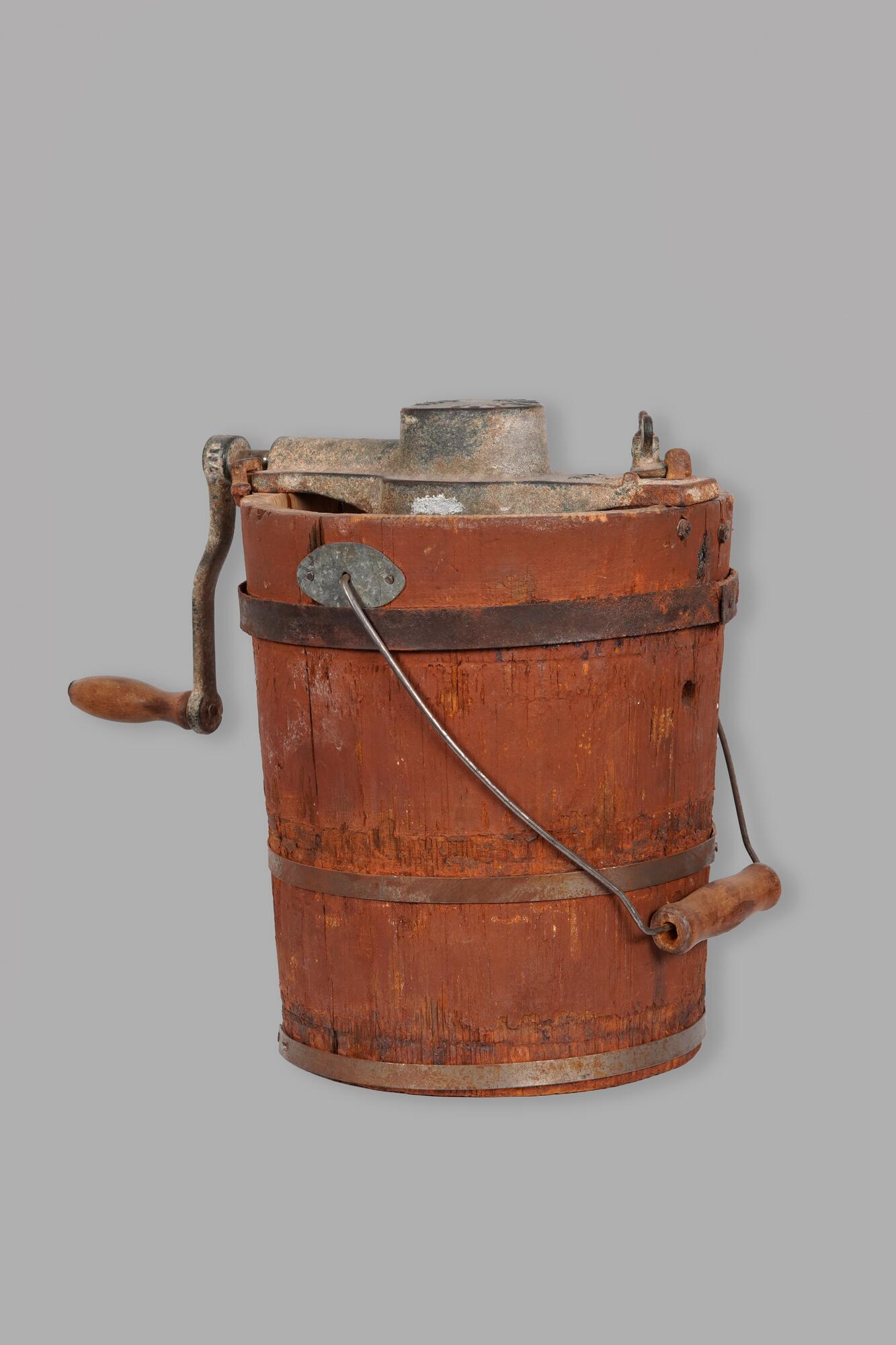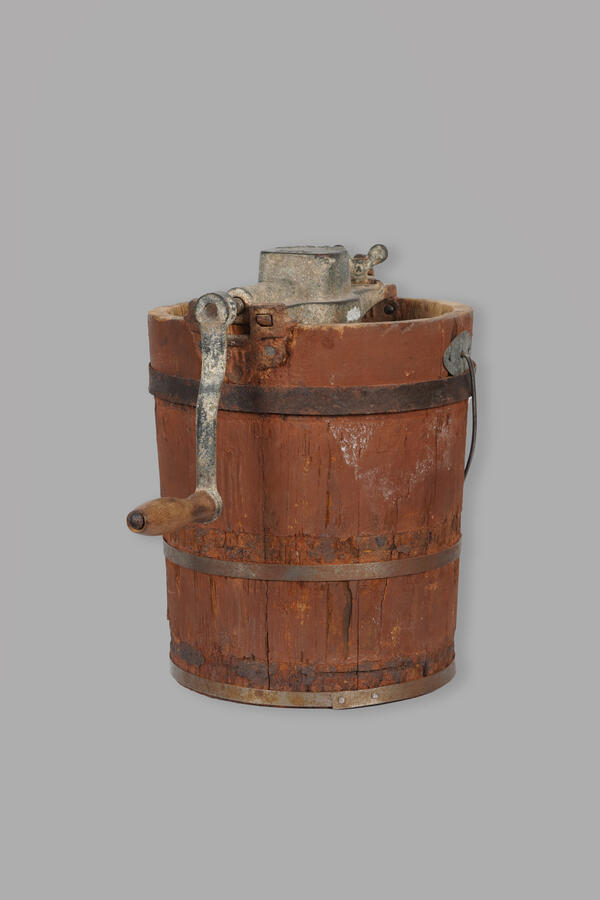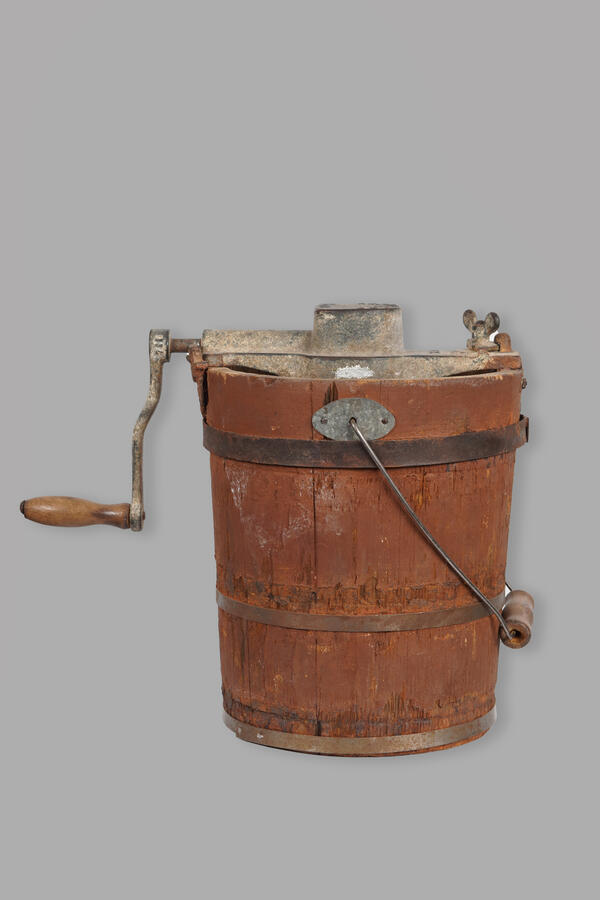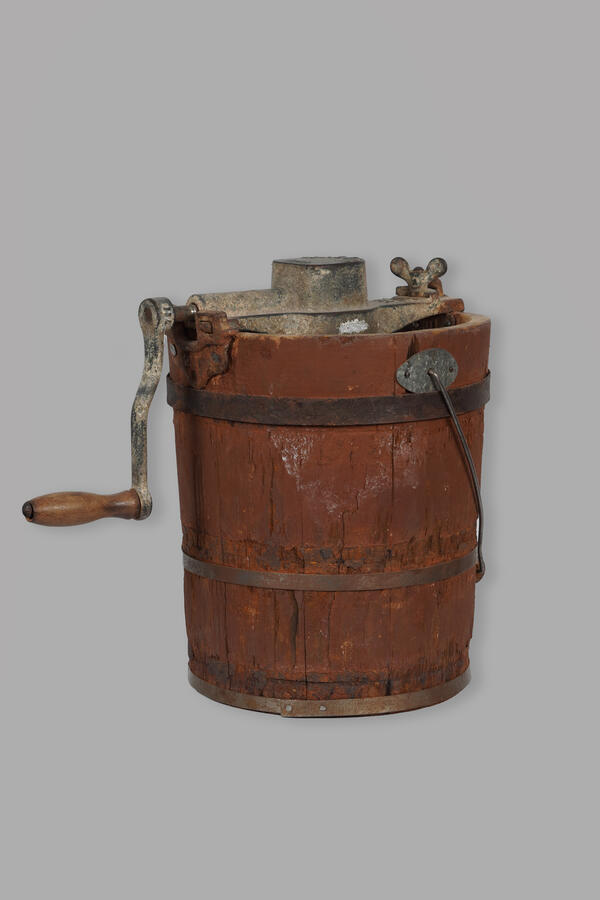In 1851, the first ice cream factory opened in Baltimore. By that time, the home recipe of this cold dessert had long been known. For the first time, the method of making homemade ice cream was published in 1718 in London, in the collection of recipes composed by Mary Eales. Nearly a decade before the Baltimore factory opened, in the 1840s, the first homemade freezer ice cream maker was patented.
The inventor of this device was an American Nancy Johnson. The ice cream maker consisted of a wooden pail fixed by metal hoops, with a base in the center of the bottom. A metal container with a built-in cranker was inserted inside the pail. A handle was used to carry the ice cream maker around.
Before starting work, the ice cream maker was washed, dried, and the parts were checked for serviceability. The ice cream mix was usually made from milk or cream with sugar. Pieces of fruit, nuts and other ingredients were added to it according to the cook’s taste. The finished liquid mixture was filtered, cooled and filled about two-thirds of the metal container of the freezer. The lid with a hole in the middle and with a gear wheel was screwed tightly with a screw-lamb. The space between the metal and wooden walls was filled with ice cubes mixed with salt. Salt prevented the ice from quick melting and the ice cream mix managed to get cooled to –21° C. The handle fixed on the tub rotated like a water well winch. With its help, the roller and beater were set in motion.
Approximately ten minutes later, the lid was removed, ice was removed with a damp warm towel, the mass was scraped off the walls of the ice cream maker with a spatula. The process was repeated until the mass was churned to be as thick as butter. Now it could be poured into prefabricated molds that consisted of two halves and were shaped like fruit, animals, and buildings. The completed form was wrapped in paper and placed in a container with ice. After some time, the form was removed from the cold with a towel soaked in hot water and well wrung out. Ice cream was laid out on a dish and, if needed, colored with berry or fruit juice.
In Russia, Ivan Isler patented his “ice cream machine” around the same time.
With the help of manual ice cream makers, not only classic white or fruit ice cream was made. Tea and coffee ice cream, ice cream made from rye bread, barberry, “with orange, mignonette or jasmine flower”, from currant buds were in great demand.
The inventor of this device was an American Nancy Johnson. The ice cream maker consisted of a wooden pail fixed by metal hoops, with a base in the center of the bottom. A metal container with a built-in cranker was inserted inside the pail. A handle was used to carry the ice cream maker around.
Before starting work, the ice cream maker was washed, dried, and the parts were checked for serviceability. The ice cream mix was usually made from milk or cream with sugar. Pieces of fruit, nuts and other ingredients were added to it according to the cook’s taste. The finished liquid mixture was filtered, cooled and filled about two-thirds of the metal container of the freezer. The lid with a hole in the middle and with a gear wheel was screwed tightly with a screw-lamb. The space between the metal and wooden walls was filled with ice cubes mixed with salt. Salt prevented the ice from quick melting and the ice cream mix managed to get cooled to –21° C. The handle fixed on the tub rotated like a water well winch. With its help, the roller and beater were set in motion.
Approximately ten minutes later, the lid was removed, ice was removed with a damp warm towel, the mass was scraped off the walls of the ice cream maker with a spatula. The process was repeated until the mass was churned to be as thick as butter. Now it could be poured into prefabricated molds that consisted of two halves and were shaped like fruit, animals, and buildings. The completed form was wrapped in paper and placed in a container with ice. After some time, the form was removed from the cold with a towel soaked in hot water and well wrung out. Ice cream was laid out on a dish and, if needed, colored with berry or fruit juice.
In Russia, Ivan Isler patented his “ice cream machine” around the same time.
With the help of manual ice cream makers, not only classic white or fruit ice cream was made. Tea and coffee ice cream, ice cream made from rye bread, barberry, “with orange, mignonette or jasmine flower”, from currant buds were in great demand.






